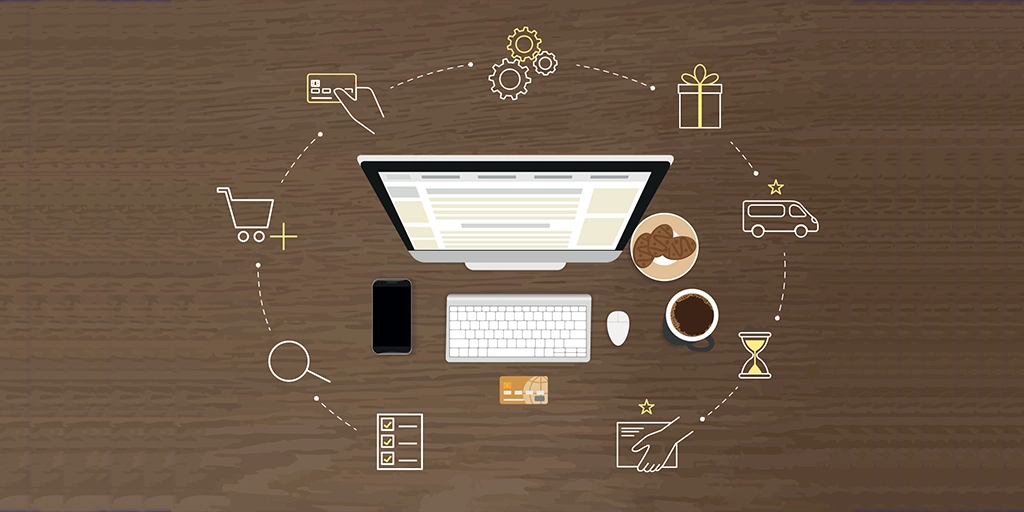Headless Commerce 101: An Introduction to the Future of eCommerce
In today's dynamic digital landscape, eCommerce businesses constantly seek innovative ways to deliver superior customer experiences. One strategy gaining significant traction is "Headless Commerce." But what exactly is Headless Commerce, and how is it revolutionizing the eCommerce industry?
Headless Commerce: A Paradigm Shift
Headless Commerce represents a significant shift in how eCommerce platforms are built and operated. Traditional eCommerce platforms tightly link the front-end and back-end systems, meaning changes to one can often disrupt the other. It also means traditional eCommerce platforms cannot take advantage of new front-end technology, which provides superior customer shopping. However, Headless Commerce breaks away from this paradigm, separating the user-facing side (the "head") from the back-end data management and logistics side.
This decoupling allows businesses to make updates to either end without impacting the other, enabling faster updates, greater freedom in design, and enhanced responsiveness to market trends. Furthermore, it allows businesses to use different technologies for the front-end and back-end, choosing the best tools for each job. And this is why headless commerce can offer a vastly superior shopping experience than its non-headless counterpart.
Why Performance Matters in eCommerce
Regarding eCommerce, performance isn't just a technical metric—it's a critical driver of business success. A high-performance eCommerce site enhances the customer experience, leading to higher engagement, larger average order values, and improved conversion rates. Conversely, poor performance can frustrate customers, drive them away, and impact a company's bottom line.
Research supports this. Studies consistently show a direct correlation between performance—precisely, page load speed—and critical business metrics like conversion rate and average order value. A delay of just a single second in page load speed can significantly drop conversions. Therefore, optimizing for performance isn't a mere technical concern—it's a vital business strategy.
What Makes an Ideal Headless Commerce System?
Building a successful Headless Commerce system is no small task; it requires integrating numerous harmonized components. Two primary characteristics define an ideal Headless Commerce system: high performance and operational efficiency.
The Cornerstone of Performance: Robust Data Ingestion
A high-performing Headless Commerce system hinges on a robust data ingestion engine. The design should be capable of ingesting and normalizing data across a merchant's tech stack, including the product catalog, CMS content, and price books. This data should be transformed into a structure built specifically for a headless commerce environment.
Why is this important? For starters, it streamlines the work of front-end developers, reducing the number of round-trip API calls they have to make. This reduces latency, adds agility, and reduces engineering tribal knowledge. Moreover, it ensures that the front end is populated with consistent and accurate data, translating into a seamless and reliable user experience.
A well-optimized data ingestion engine also underpins the performance of the front end. By providing a performant GraphQL, a single headless API can efficiently deliver all commerce and content data to the front end, improving page load times and user experience.
Operational Efficiency through Scalability
Operational efficiency is the second pillar of an ideal Headless Commerce system. This efficiency is best illustrated by the system's ability to roll out multiple storefronts or "heads" without fusing and transforming data for each codebase.
By managing this process on the back end, the system empowers merchants with a one-to-many efficiency model. This means businesses can effectively roll out new storefronts and shopping experiences within different mediums to match where the customer already is. These new mediums may include web apps, mobile apps, in-store experiences, conversational commerce, and the Internet of Things. This capability is particularly beneficial for companies looking to expand or diversify their offerings, as it allows them to do so without the usual back-end overheads.
Key Features of High-Performing Headless Commerce Systems
While an ideal Headless Commerce system will have unique features based on a business's specific needs, a few key features consistently contribute to high performance and scalability.
Performance Features: GraphQL and Advanced Edge Caching
GraphQL is a modern data query and manipulation language for APIs, a must-have feature for a high-performing Headless Commerce system. It allows front-end developers to request the exact data they need, dramatically reducing the amount of data that needs to be transferred and improving page load times. Moreover, GraphQL is type-safe and enables powerful developer tools to boost developer productivity and reduce bugs. These advantages empower your engineering team to build the right solutions faster.
Advanced edge caching is another crucial feature for performance. Edge caching refers to storing content closer to the customers who need access, which can significantly reduce latency and improve load times. In the context of Headless Commerce, advanced edge caching can boost the performance of the GraphQL API and lead to a smoother and faster user experience.
Flexibility and Scalability: Multi-Storefront Support
In addition to performance, a superior Headless Commerce system should provide the flexibility to scale as per the business needs. One feature that enhances scalability is support for multiple storefronts. This enables businesses to launch new storefronts quickly and efficiently without modifying the back end for each one. It allows businesses to experiment with new markets, customer segments, brands, or business models while minimizing development overhead.
In Summary
Headless Commerce represents a paradigm shift in how eCommerce platforms are built and managed. Businesses can optimize performance and efficiency by decoupling the front-end and back-end systems, directly improving the customer experience and key business metrics such as conversion rate and average order value.
A high-performing Headless Commerce system requires robust data ingestion, a performant GraphQL API, and advanced edge caching technology. Moreover, operational efficiency can be significantly enhanced with the ability to support multiple storefronts.
The transformative potential of Headless Commerce is immense. With the right strategy and technology, businesses can harness this potential to drive growth and stay ahead in the competitive eCommerce landscape.
If you wish to stay updated with the latest developments in the exciting field of Headless Commerce, consider subscribing to our newsletter.
Share this
You May Also Like
These Related Stories

6 Crucial Factors to Consider When Evaluating Headless Commerce

The Technology Behind Headless Commerce Simplified


